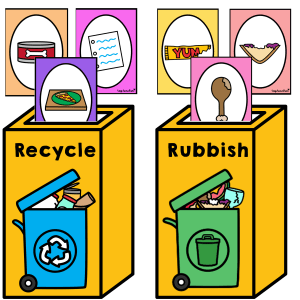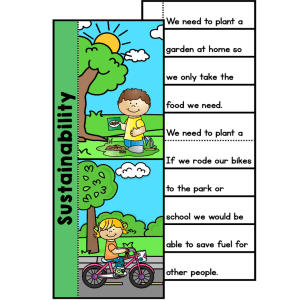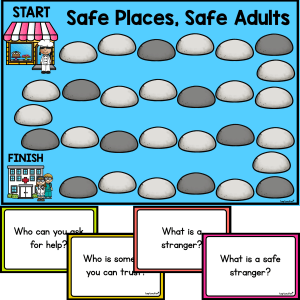Probability Colour: What is the Chance? Worksheets

Description
Probability Colour: What is the Chance? Worksheets offer a fun and visually engaging way for students to explore probability through everyday experiences. These worksheets encourage children to consider what they are likely or unlikely to see, do, or eat on the day they complete the activity—making learning both personal and meaningful.
This resource is designed to build early probability skills by prompting students to make predictions and justify their thinking. Each worksheet features bold, relatable images accompanied by a clear two-colour coding system. Students simply colour each item based on whether they believe it is something they will or won’t encounter that day. This not only introduces chance concepts but also sparks classroom discussion and reflective thinking.
The open-ended nature of the Probability Colour: What is the Chance? Worksheets means that some responses may vary, which provides the perfect opportunity for students to explain and reason their choices. Whether a child spots a fairy on a book cover in the classroom or has something unusual planned after school, they can personalise their answers and practise using chance vocabulary in context. With minimal prep required, this resource is ideal for both planned lessons and quick, purposeful filler activities.
Key Learning Outcomes:
- ✅ Understand and apply the concept of chance in everyday situations
- ✅ Use prediction to determine likelihood (will or won’t see, do, or eat)
- ✅ Practise using chance-related vocabulary in meaningful contexts
- ✅ Justify predictions using personal experiences and observations
- ✅ Build confidence in interpreting visual information and making decisions
What’s Included:
- A variety of worksheets featuring bold, engaging images for prediction
- Clear colouring key using two distinct colours for 'will' and 'won’t'
- Prompts that cover sight, actions, and foods to provide range and relevance
- Open-ended visuals to support reasoning and encourage personal interpretation
- Low-prep format ideal for whole class, small groups, or independent tasks
Materials Needed:
- Printed copies of the worksheets (A4 or A3 for younger learners)
- Two coloured pencils, crayons, or markers (as instructed on the sheet)
- Optional: clipboards or hard surfaces for floor work or rotations
- Optional: anchor chart or poster with chance-related vocabulary
How to Use:
- Introduce the concept of chance and explain how it applies to everyday experiences.
- Hand out a worksheet and review the colouring code with your students.
- Students examine each image and colour it according to whether they believe they will or won’t see, do, or eat it that day.
- Encourage students to explain their thinking orally or in writing to support reasoning skills.
- Review responses as a class, inviting students to share interesting or unique justifications.
- Store finished worksheets in student portfolios or use them as a launch pad for graphing class-wide results.
Ideas for Classroom Use:
- 💡 Use at the start of a probability unit to introduce the concept of likelihood
- 💡 Include in a maths rotation as a light, low-prep task with meaningful outcomes
- 💡 Incorporate into morning work or early finisher tubs for quick consolidation
- 💡 Pair with a class discussion on unusual or surprising predictions for oral language development
- 💡 Extend with a follow-up graphing activity showing how many students chose 'will' or 'won’t' for each image
Top Teacher Tips:
- 💛 Enlarge to A3 for younger students or those who benefit from larger images
- 💛 Use the same worksheet on different days to compare how responses change
- 💛 Model reasoning with a few sample images before students begin independently
- 💛 Keep a few printed sets on hand as go-to activities for relief or transition times
Probability Colour: What is the Chance? Worksheets provide a creative and thoughtful way for students to explore probability—supporting reasoning, vocabulary development, and real-world connections in a hands-on and colourful format.
Additional information
| Number of Pages | 3 |
|---|---|
| File Format | |
| Australian Curriculum Code | AC9MFST01, EYLF OUTCOME 4: Children are confident and involved learners, EYLF OUTCOME 5: Children are effective communicators |
Australian Curriculum V9
F - 6
Lorem ipsum dolor sit amet, consectetur adipiscing elit.
Lorem ipsum dolor sit amet, consectetur adipiscing elit.
Lorem ipsum/ Lorem ipsum/ Lorem ipsum
Lorem ipsum dolor sit amet, consectetur adipiscing elit.
Lorem ipsum dolor sit amet, consectetur adipiscing elit.
Lorem ipsum/ Lorem ipsum/ Lorem ipsum
Lorem ipsum dolor sit amet, consectetur adipiscing elit.
Lorem ipsum dolor sit amet, consectetur adipiscing elit.
Lorem ipsum/ Lorem ipsum/ Lorem ipsum
Lorem ipsum dolor sit amet, consectetur adipiscing elit.
Lorem ipsum dolor sit amet, consectetur adipiscing elit.
Lorem ipsum/ Lorem ipsum/ Lorem ipsum
Lorem ipsum dolor sit amet, consectetur adipiscing elit.
Lorem ipsum dolor sit amet, consectetur adipiscing elit.
Lorem ipsum/ Lorem ipsum/ Lorem ipsum





